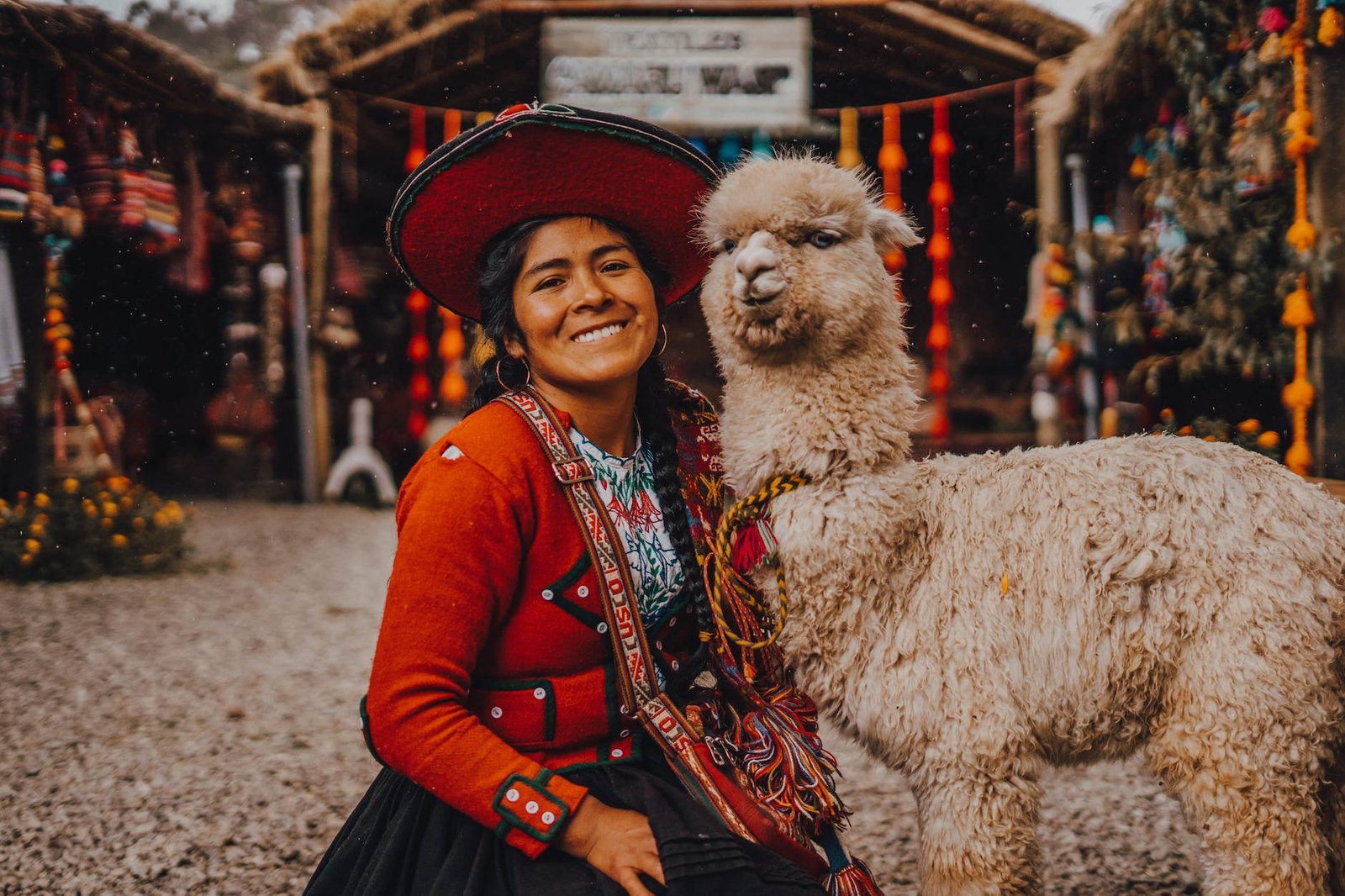Understanding Alpacas: Do They Like Being Petted and How to Do It Right
Ever wondered if alpacas enjoy being petted? Well, I’ve spent years interacting with these adorable creatures and I’m here to share my insights. Alpacas are unique animals, each with their own personality and comfort levels.
Some alpacas love the attention and will readily come up to you for a good scratch. Others may be a bit more reserved, especially if they’re not used to human contact. It’s all about understanding their behavior and respecting their boundaries.
In the following sections, I’ll delve deeper into the world of alpacas and their preferences when it comes to petting. I’ll share some tips on how to approach these fluffy creatures and make your interaction a positive experience for both you and the alpaca. So, let’s get started, shall we?
Key Takeaways
- Alpacas have varied reactions to being petted, with some enjoying a good scratch while others are more reserved, mainly depending on their exposure to human interaction.
- Initial approach to an alpaca is pivotal, where slow movements and respecting their space are recommended for a positive experience.
- Understanding alpaca behavior, such as recognizing the signs of comfort and discomfort, can aid in determining their receptiveness to petting.
- Effective approaches for petting include allowing the alpaca to approach you, petting the neck or back rather than the face or rear, and always being observant of their body language.
- Alpacas communicate non-verbally and indicate discomfort through signs like spitting or other defensive behaviors.
- Patience, respect, and caution are key to building a successful and enjoyable relationship with alpacas.
Alpacas and Human Interaction
Drawing from my years of interaction with these fascinating creatures, it’s apparent that individual personalities of alpacas play a large role in how they react to human touch. Much like humans, alpacas possess a myriad of unique traits that greatly influence their behavior.
It’s essential to remember that alpacas are herd animals. As such, they have strong social bonds with their fellow alpacas and are often wary of outsiders. This inherent trait makes them very sensitive to changes in their environment including the presence of humans.

From my experience, there’s truth in the claim that alpacas like to be petted. However, there are stipulations to this behavior, chiefly revolving around how the initial approach is made. Consider an alpaca as you would a person you’ve just met. It’s best to first allow the alpaca to get used to your presence and extend its trust to you.
Below are a couple of approaches I’ve found to be effective:
- Approach slowly: Alpacas are more comfortable when they’re given time to adjust to your presence. Rapid movements can startle them, creating a negative association.
- Respect their space: While some alpacas do enjoy closeness, others may not. It’s critical to respect their boundaries and only proceed if they seem comfortable.
It’s apparent that understanding the behavior and body language of alpacas is key to a positive petting experience. Take note of these tips, and you’ll be on your way to forming a sensational bond with these incredible animals.
Understanding Alpaca Behavior
As we dive deeper into the subject of alpaca behavior, it’s vital to recognize their unique characteristics that set them apart from other domesticated animals. One of the keys to unlocking the mystery of whether alpacas enjoy being petted, lies in decoding their behavior.
Alpacas are known for being gentle and timid creatures. They’re naturally inquisitive, and their curiosity sometimes outweighs their initial shyness with humans. This trait plays a significant part in how receptive they are to be petted. Yet, it’s essential to remember that every alpaca is an individual with its nuances and quirks in behavior.
For instance, an alpaca might react positively to being touched on its legs, while another might feel distinctly uncomfortable with the same action. Understanding these individual differences is crucial for providing a pleasant petting experience.
One profound aspect of alpaca behavior is their strong herd instinct. This trait translates into heightened sensitivity to changes and disturbances in their environment. So if you wish to pet an alpaca, approach slowly, allowing the animal to become accustomed to your presence. Abrupt movements or rushing could spook them, causing stress and a potentially negative reaction.
An in-depth study into alpaca behavior can reveal many patterns that can help us interpret their comfort level with human interaction. Unsettled behavior such as kicking, spitting, or making a humming noise can communicate discomfort, while a relaxed body posture often indicates acceptance and tranquility.
Remember, knowledge of an alpaca’s behavior doesn’t just help in understanding whether they like being petted. It’s also pivotal for their overall care and welfare. So, while the journey to comprehend alpaca behavior might be intricate, it’s undoubtedly rewarding in more ways than one.
Stay tuned as we unravel more about the fascinating world of alpacas in following sections.
Signs of Comfort and Discomfort:
Navigating the signs of comfort and discomfort in alpacas isn’t always easy. Though, as a seasoned alpaca handler, I’ve learned to recognize these signals.
When an alpaca is comfortable, they’ll show sure signs. Alpacas that enjoy human interaction and petting will have a relaxed body posture. You’ll notice their ears pointing forward or relaxed on the side. They might approach you out of curiosity or remain in close proximity, indicating they feel safe.

It’s important not to assume these comfort signs as an invitation to pet though. Keeping a respectful distance, till they take the initiative to come closer, is key to making any alpaca feel at ease.
Onto signs of discomfort or distress. Alpacas that aren’t comfortable may try to move away, raise their tail or hold their ears back. They can also spit, make vocal noises, or exhibit other defensive behaviors.
Let’s break these signs down:
| Sign | Comfort/Discomfort |
|---|---|
| Ears pointing forward or relaxed | Comfort |
| Approaching or staying close | Comfort |
| Moving away | Discomfort |
| Raising tail | Discomfort |
| Holding ears back | Discomfort |
| Spitting or making noises | Discomfort |
Recognizing these signs forms the bedrock of responsible alpaca handling. It also lets you identify when to back off, ensuring that the alpaca remains stress-free.
These signs can vary among individual alpacas, so paying close attention to each alpaca’s unique behavior is essential. Remember it’s all about building trust and understanding their individual comfort zones. Patience, respect, and caution lead to positive interactions with these magnificent creatures.
Interpreting these signs correctly leads to better relationships with alpacas. It encourages positive and stress-free interactions, enhancing the petting experience for both human and alpaca. Regardless of how well we think we understand these animals, always be mindful of their comfort and welfare when interacting with them.
Approaching an Alpaca for Petting
So you’re wondering how to approach an alpaca for petting? It’s not as simple as walking up to it and beginning to stroke. Understanding the animal’s behavior is critical to ensuring a positive interaction.
Start slow. Alpacas are timid animals by nature. They require time to adjust to new situations and surroundings. One of the key tactics to properly approach an alpaca is to let the alpaca approach you. Stand several feet away and remain calm. Let the alpaca observe and get familiar with your presence.
Once the alpaca shows curiosity and approaches, you can move in closer—but remember to move slowly. Avoid sudden movements that could startle the animal. Alpacas prefer not to have their face or rear touched. Instead, aim to pet their neck or back.

Body language is key. Alpacas communicate primarily through body language. Make note of their ear positioning which we learned is a sign of their mood. Keep an eye out for any signs of discomfort such as moving away, raising their tails or holding their ears back. I find it’s always best to back off if even a slight hint of distress is observed.
Remember, understanding the alpaca’s individual personality and comfort level is crucial. Whole understanding of petting an alpaca isn’t applicable to all due to their unique behaviors and traits. It’s an essential step to not only ensure their comfort but also to enhance your petting experience. In my experience, spending quality time observing these animals and their interactions can be as rewarding as the petting itself.
I can’t help but emphasize the importance of being patient. It’s the fundamental base for any interaction with alpacas. Building trust and calmness with the animal may take time to develop. In the end, careful observation and respectful action are the pillars of successful and enjoyable alpaca petting. Through this approach, you’re not only putting the alpaca at ease but also making sure you have a pleasant and memorable experience, too.
While petting these wonderful creatures, ensure to abide by these guidelines. They offer an excellent starting point on the journey toward understanding and engaging with alpacas in a way that respects their unique nature.
Tips for Petting an Alpaca
Before embarking on your journey to pet an alpaca, remember it’s no standard chore. It’s an interaction that requires thoughtfulness, understanding, and respect towards these unique creatures.
Firstly, let the alpaca approach you. Their curiosity often gets to them. Use this to your advantage and let them make the first move. While you wait, make sure to turn sideways. This non-threatening stance lets the alpaca know you’re not there to harm them.
Another tip is to bend down or squat. Alpacas are prey animals. They are always on the lookout for potential threats. By lowering your body, you’re less intimidating. It’s a small, quick adjustment with big payoffs.
Confused where to pet? Alpacas enjoy a nice scratch on their neck or back. Avoid touching their face or rear. It’s not something they appreciate. Always watch their body language. Ear positioning is a key indicator of an alpaca’s mood and comfort level. If their ears are back, it’s time to back off.

Communication with an alpaca is non-verbal. Be mindful of their reactions when you reach out to touch them. Alpacas express discomfort through spitting, a behavior you’ll want to avoid provoking.
Take it slow and steady. Swift movements can startle alpacas…and startled alpacas aren’t the most receptive towards petting. It’s crucial to maintain a slow, calming demeanor. Building trust takes time.
Remember to respect the alpaca’s space. They are not your average pets and don’t act like one either. Be patient and let them guide the interaction.
And finally, enjoy the process. Petting an alpaca isn’t just about the physical touch. It’s about forming a unique connection with an enigmatic creature. So, soak in the experience as you build lasting memories.








Our picks
Alpaca & Wool Felted Sole Inserts: Comfy Upgrade?
Best Alpaca Socks for Hiking: Ultimate Comfort and Durability on Trails
Best Alpaca Halter for Comfort and Control